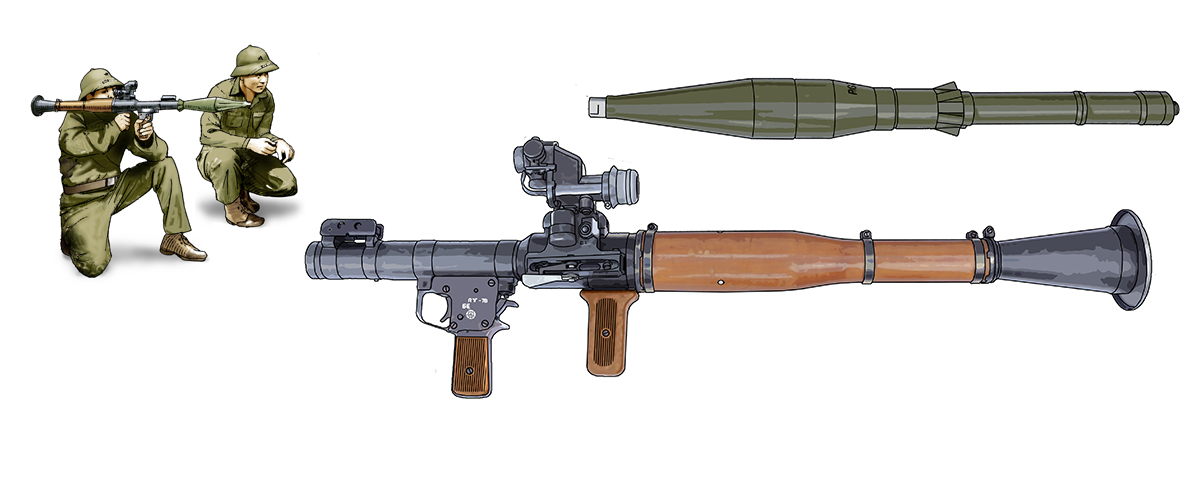RPG-7 Specs
- Launch Tube Length: 37.4 in.
- Launch Tube Weight: 8.92 lbs.
- Launch Tube Diameter: 40mm
- Projectile Weight: 4.4 lbs.
- Max.Range: 962m
- Max.Effective Range: 300m
- Max. Armor Penetration: 440mm
Introduced into Soviet service in 1962 and provided to North Vietnam starting in 1966, the RPG-7 was carried by every infantry squad in the People’s Army of Vietnam. Although it saw its initial combat in the 1967 Arab-Israeli War, the RPG-7 gained its vaunted international reputation in Vietnam. The rocket first came to the American public’s notice during the 1968 Tet Offensive, where it was employed to deadly effect in the fighting in and around Hue. More accurate, longer-ranged, easier to use and far more powerful than the RPG-2 that it replaced, and more powerful than the much heavier 57mm recoilless rifles North Vietnam had received from China and the Soviet Union in the 1950s, it proved to be an equalizer in infantry vs tank combat.
The RPG-7, whose designation stands for Ruchnoy Protivotankoviy Granatomet—or “hand-held anti-tank grenade launcher”—is a recoilless, muzzle-loaded, shoulder-fired anti-tank weapon that fires a fin-stabilized rocket with a shaped charge warhead. The Chinese license-built version is called the Type 65 RPG. Of several variants the Soviet Union produced, the RPG-7V was the version deployed to Vietnam.
Loading consists of inserting the assembled B-41 rocket into the launch tube, with the booster section going into the tube first. The Soviet Union introduced a high explosive anti-personnel round in the 1970s, but it was probably not used in Vietnam.
The RPG-7 was simple to use in a close-range engagement, but the optical sight’s design made it very challenging to estimate range and deflection. The range marks were based on the operator’s estimate of the target’s vertical dimension. An inaccurate perception of target height ensured a corresponding error in range estimate and launch tube elevation. It was not uncommon for an operator to be off by as much as 10-15 percent in engagements beyond 200 meters. More important, he had to estimate wind deflection because the RPG’s slow flight speed (under 300 meters per second) and aerodynamic shape made it very susceptible to crosswinds. However, the PAVN’s preference for “hugging tactics” to inhibit Allied artillery effectiveness probably also negated the RPG-7’s shortcomings as a “long-range” weapon. It gave each PAVN squad its own “direct fire” anti-armor weapon and remains in service with that army and those of 39 other nations to this day.
The RPG-7 remains the direct support infantry weapon of choice among global revolutionary movements. Its continued popularity attests to its low-cost utility and effectiveness.
GET HISTORY’S GREATEST TALES—RIGHT IN YOUR INBOX
Subscribe to our HistoryNet Now! newsletter for the best of the past, delivered every Monday and Thursday.





